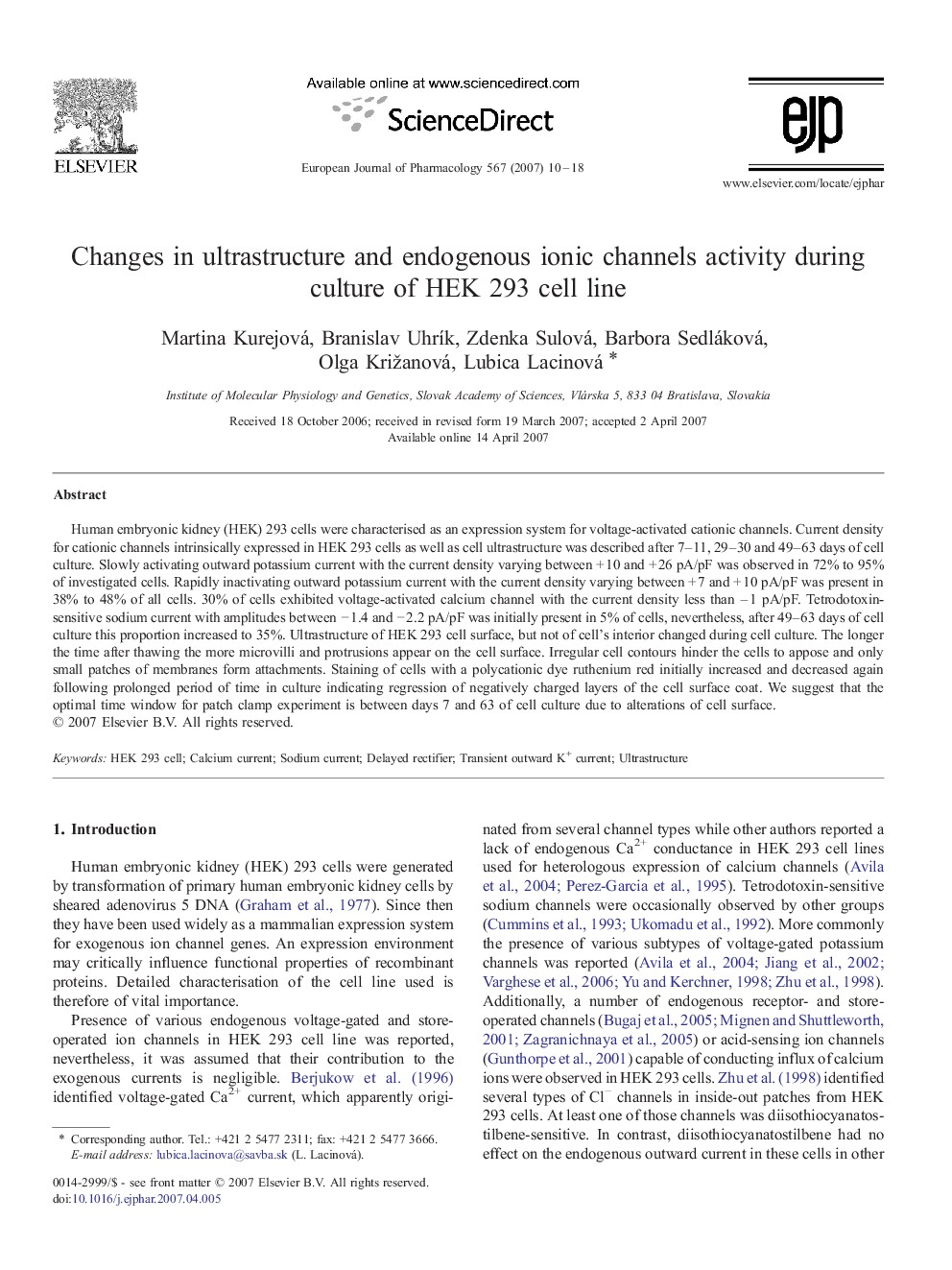| Article ID | Journal | Published Year | Pages | File Type |
|---|---|---|---|---|
| 2536101 | European Journal of Pharmacology | 2007 | 9 Pages |
Human embryonic kidney (HEK) 293 cells were characterised as an expression system for voltage-activated cationic channels. Current density for cationic channels intrinsically expressed in HEK 293 cells as well as cell ultrastructure was described after 7–11, 29–30 and 49–63 days of cell culture. Slowly activating outward potassium current with the current density varying between + 10 and + 26 pA/pF was observed in 72% to 95% of investigated cells. Rapidly inactivating outward potassium current with the current density varying between + 7 and + 10 pA/pF was present in 38% to 48% of all cells. 30% of cells exhibited voltage-activated calcium channel with the current density less than – 1 pA/pF. Tetrodotoxin-sensitive sodium current with amplitudes between − 1.4 and − 2.2 pA/pF was initially present in 5% of cells, nevertheless, after 49–63 days of cell culture this proportion increased to 35%. Ultrastructure of HEK 293 cell surface, but not of cell's interior changed during cell culture. The longer the time after thawing the more microvilli and protrusions appear on the cell surface. Irregular cell contours hinder the cells to appose and only small patches of membranes form attachments. Staining of cells with a polycationic dye ruthenium red initially increased and decreased again following prolonged period of time in culture indicating regression of negatively charged layers of the cell surface coat. We suggest that the optimal time window for patch clamp experiment is between days 7 and 63 of cell culture due to alterations of cell surface.
